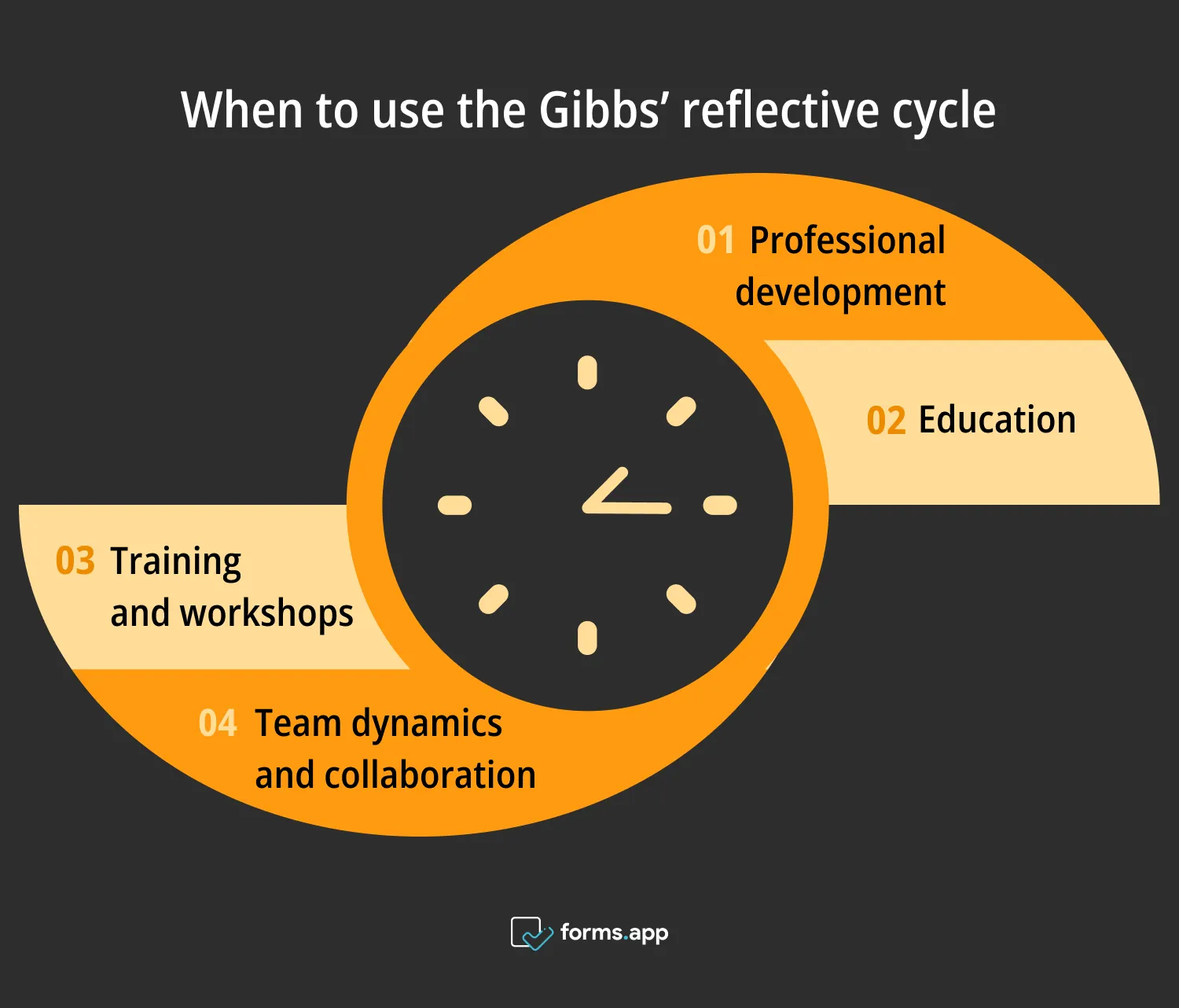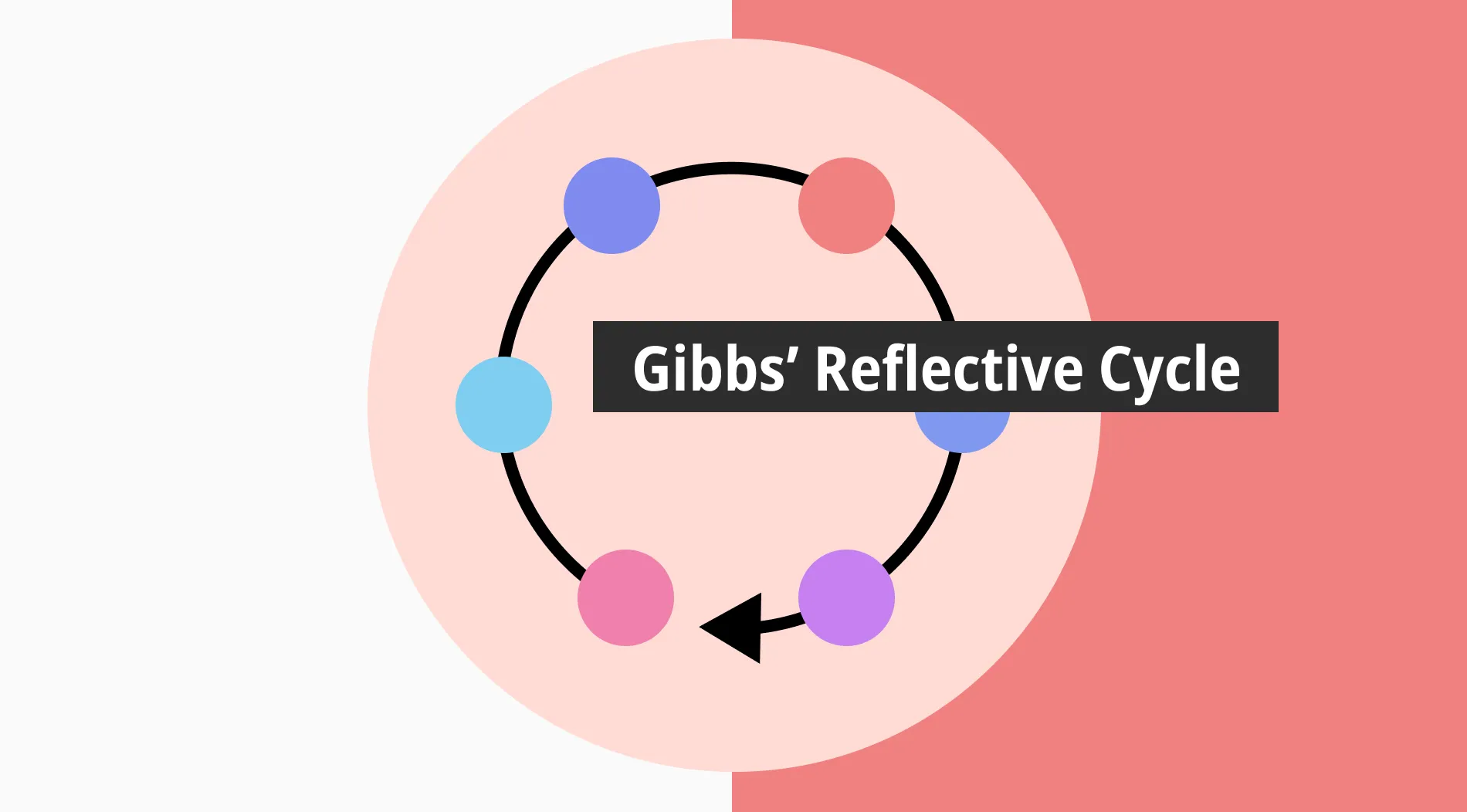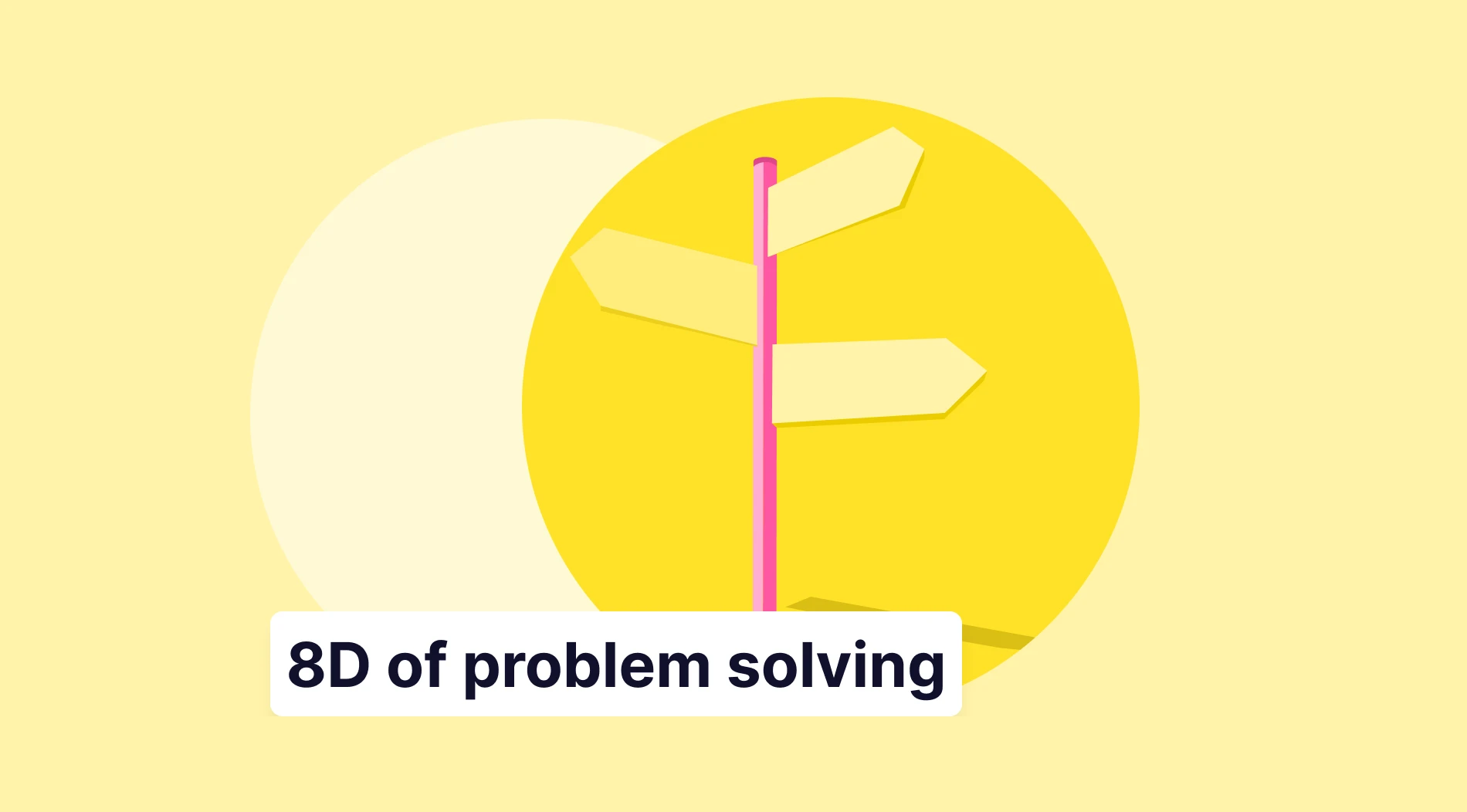As human beings, we all learn through experience. Whether it is good or bad or more complicated to delineate. Learning by doing is a part of life, and it is no different when it comes to business. We can reflect on our progress in our career path and improve along the way through a variety of methods.
Gibbs reflective model is one of the most popular methods to help you reflect on your experience and progress in your professional life. In this article, we cover Gibbs’ famous reflective cycle diagram, when best to use it, and the pros and cons of this model. Let’s dig in!
What is the Gibbs’ reflective cycle?
Developed by Graham Gibbs in 1988, Gibbs reflective cycle is a six-stage model that can help you reflect on your experience in the workplace - positively or negatively.
Each stage guides you through a helpful reflective process and gives you a chance to identify what you did, what went well, the points of improvement and development, and strengths and weaknesses.
The stages of Gibbs reflective model are named Description (what happened), Feelings (your reactions and feelings), Evaluation (what was good and bad), Analysis (makes sense of the situation), Conclusion (what have you learned), and Action Plan (what are you going to do differently), which we will talk about in the following sections of the article.
When to use the Gibbs’ reflective cycle
Gibbs model of reflection is a teaching and learning method that can be used at any time during professional or academic development. It is a versatile tool that can be applied to various contexts where reflection on experience is necessary. Below, you can find some key situations where you can use Gibbs reflective cycle:

Right times to use Gibb’s reflective cycle
1. Professional development
You can use Gibbs reflective model when experiencing a significant incident at work. For example, if you handle a challenging project and face a critical decision along the way, the Gibbs model can aid you in reflecting on what happened, how you managed the situation, how you may approach similar situations in the future, and so on.
In addition, you can also use Gibbs model during your performance review. You can reflect on your strengths and areas for improvement to help you figure out what actions led to success or challenges.
2. Education
Gibbs reflective model can help students with practical placements in fields such as healthcare or teaching. Students can use this model to reflect on their real-world experiences, understand what they have learned, and identify areas for growth. It can also be used for assignments or projects in schools to analyze performance and challenges faced and learn how to improve in the future.
3. Training and workshops
In a professional environment, you can use Gibbs reflective method to consolidate what you have learned. This method can help you reflect on how you can apply the information and identify other areas to develop for the future.
4. Team dynamics and collaboration
Gibbs reflective model can help when working with your team members on collaborative projects. You can evaluate the effectiveness of collaboration, understand the dynamics of the group members, and consider the points that need improvement in the future.
The Gibbs’ reflective cycle: Explained
Previously in the article, we briefly mentioned the six steps of Gibbs reflective cycle diagram. This model consists of six stages including Description, Feelings, Evaluation, Analysis, Conclusion, and Action Plan. When the first three steps of this diagram focus on ‘what happened’ during the experience, the last three steps focus on ‘how you could improve your experience’ for similar situations in the future. Let’s take a look at each of these stages in detail.
Stage 1: Description
This stage is simply about describing what happened. To conduct this, you should focus on a factual description of what actually happened, excluding any comment or personal point of view. Keeping the information as relevant as possible and to the point is important.
This will provide you with some context and help you to get a better understanding of your experience. Below are some questions to help you set the scene:
1. What happened?
2. When it occurred?
3. Who was there?
4. What did they do?
5. What was the outcome?
Stage 2: Feelings
At this stage, you describe the feelings that you felt during your experience, as well as your thoughts. Instead of evaluating or interpreting your feelings, simply state what they were as they were. You can consider the questions below when reflecting on your feelings:
1. How did you and/or others feel before, during, and after the experience?
2. What did you think at the time?
3. What impact did your emotions, values, and beliefs have?
4. How do you feel about the experience now?
5. How do you think others feel about the experience now?
Stage 3: Evaluation
You should be able to objectively evaluate your experience at this stage. Consider what went well and what went wrong or could have gone better when conducting this step. It is important to be as honest as possible to provide the most accurate outcome for the process. The following questions may help:
1. What went well?
2. What could have gone better?
3. What positive or negative did you contribute?
4. What positive or negative did others provide?
Stage 4: Analysis
The analysis step gives you the opportunity to make sense of what happened. At this stage, you develop understanding by describing what went well or poorly, as well as what might have helped or hindered the situation. You can take the below questions into account in this step:
1. Why did things go well?
2. Why didn’t they go well?
3. What sense can you make of the situation?
4. What knowledge or information can help you understand the situation?
5. Could you have responded in a different way?
Stage 5: Conclusion
At this stage, you focus on concluding what happened. You may focus on two conclusions: a general one, which could be transferable, and a personal one, which is more specific. You can either choose to merge them or take them separately. Here are some questions to think about when drawing conclusions:
1. What did you learn from this situation?
2. What tools or skills can help you to do better in the future?
3. What will you do differently next time?
4. How could the situation have been a more positive situation for everyone involved?
5. How could it be better next time to avoid the negative outcomes?
Stage 6: Action plan
At the action planning stage, you can plan for what you would do differently and how to position yourself in a similar situation in the future based on your conclusions. This step is useful for figuring out how you will help yourself to act differently and better handle a similar situation next time.
This stage is about anything you need to know and improve for future situations. Here are some questions to ask yourself for action planning:
1. If you had to do the same thing again, what would you do differently?
2. How will you develop/improve the required skills for the next time?
3. How and where can you use your new knowledge and experience?
4. How can you make sure that you can act differently in the future?
Gibbs’ reflective cycle examples
So far, you have learned that Gibbs’ reflective cycle works as a guide to teach you how to get better at what you do. Thinking of a variety of scenarios where you could possibly apply Gibbs’ reflective cycle, we have also thought of one that can be easily relatable to any profession. Let’s think of someone working on a project where they have missed the deadline and how they could reflect on it:
a. Description stage
Last week, I was working on a project as part of a team. I was in charge of delivering a report from an important client. Each team member had a different responsibility to complete, and my role was to compile everyone’s work into the final document.
The deadline was Friday at 2 p.m. However, I was two hours late, which caused some frustration for my manager and team. This delay caused another delay in sending the report to the client, which resulted in embarrassment for the company.
b. Feelings stage
I felt anxious throughout the week because the deadline was tight. As I realized I was not going to make it on time. I started to feel overwhelmed. After missing the deadline, I felt guilty for disappointing my team and manager. I was also stressed about the potential reactions of the client and my professional reputation.
c. Evaluation stage
Besides the negative aspects, there were some positive sides to this experience: I completed the work to a high standard and could fix the errors my peers spotted. Nevertheless, the negatives outweighed the positives of missing the deadline and damaging my credibility. This mistake affected me and my colleagues and caused stress and disappointment.
d. Analysis stage
Reflecting on my experience, I realized that I had not planned my time effectively. I could have communicated more clearly with my team about the timeline of the project in order not to rush to complete it at the last minute. I could have also asked for more support from my colleagues without trying to handle everything on my own.
e. Conclusion stage
Next time working on a team project, I will set more precise timeframes for completing tasks. I will also communicate proactively with my team about deadlines and the progress of the work. In case I realize I am running behind, I will not hesitate to ask for help and support from my team and will notify my manager earlier. I also need to improve my management skills to better anticipate how long a task will take to complete.
f. Action plan stage
To avoid a similar situation from reoccurring, I will break down the task into smaller and more achievable steps by assigning realistic timeframes. I will have more frequent communication with my team to keep track of the ongoing progress. Also, I will use project management tools to follow deadlines and responsibilities. If I foresee any delays, I will inform my manager to tackle expectations.
The above example depicts a clear and effective use of Gibbs’ reflective cycle. Gibbs reflective cycle template can also be used for efficiency, which would provide a better view of the details of each stage.
Pros & cons of Gibbs’ reflective cycle
As effective and useful as the Gibbs reflective cycle is, just like any other guidance or tool, it comes with its advantages and disadvantages. Below, we have highlighted some of Gibbs’ reflective cycle’s pros and cons. Let’s take a look:
Pros
➕ It is easy to understand and apply.
➕ It allows you to learn from your experience over time.
➕ It gives you a balanced judgment.
➕ It promotes self-awareness.
➕ It is adaptable to a wide range of situations.
Cons
➖ It can be overly subjective or superficial to have no reference to in-depth critical thinking.
➖ It can be difficult for some people to be open and connect to their emotions.
➖ Due to its steps, it can be time-consuming.
➖ It is fairly informal.
Final words
In this article, we have covered the most significant aspects of the Gibbs reflective cycle to best serve your needs and interests in a professional environment. Our guide highlighted the six stages of Gibbs reflective cycle, examples showing how to apply them in real-life situations, and its most significant pros and cons to aid you in using this cycle most effectively.
Learning by doing is a part of our day-to-day life, and it is no different when it comes to our professional lives. Gibbs’ reflective model works as a guide to help you to reflect on your experience find the best solutions, and improve your skills in your personal and professional journey.
Elif enjoys sharing her expertise through helpful guidelines and tips about marketing and business planning. She is also a linguist who has a deep interest in maps, history, culture, and languages.



